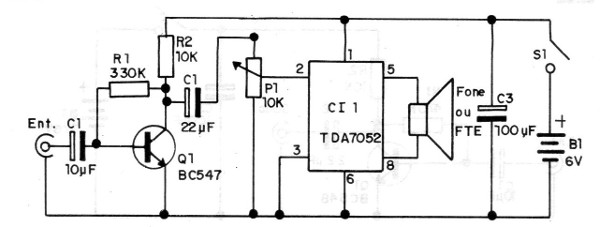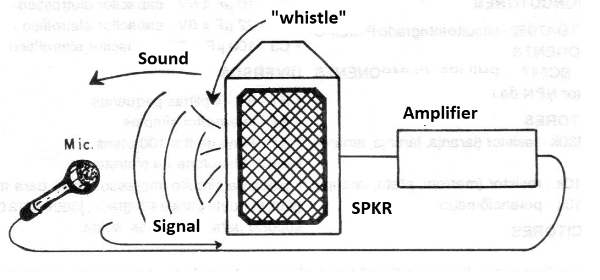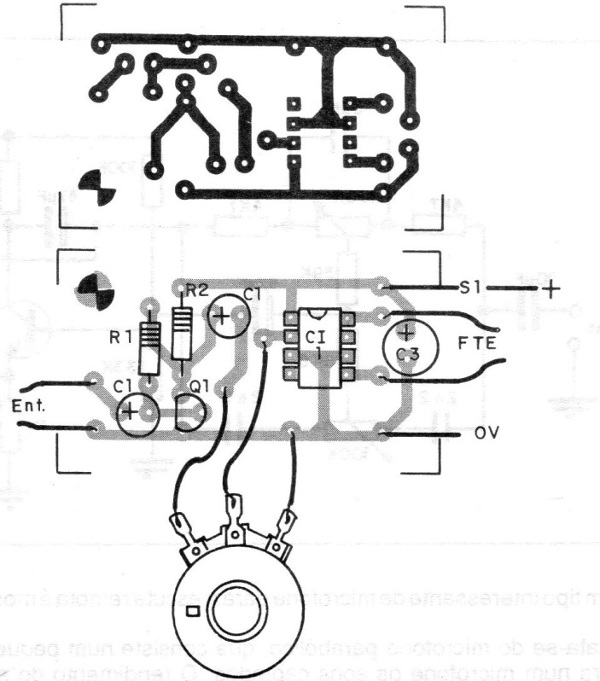This article is part of one of my e-books.
In figure 1 we have an amplifier circuit that can be used for this purpose.

This circuit is of excellent sensitivity and can power both a handset and a small speaker. Note that speakers are not suitable for this type of application, because being close to the microphone, which is high gain, can cause acoustic feedback, that is, a strong whistle that prevents the hearing of anything.
Figure 2 shows what happens.

The phone itself must be of the padded type so that it does not "escape" any sound and it will provoke the microphone whistle or acoustic feedback.
A printed circuit board for the amplifier is shown in figure 3.

SEMICONDUCTORS
CI-1 -TDA7052 - integrated circuit
Q1 - BC547 - general purpose NPN transistor
RESISTORS
R1 - 330 k - resistor (orange, orange, yellow)
R2 - 10 k - resistor (brown, black, orange)
P1 - 10 k - potentiometer
CAPACITORS
C1 - 10 uF x 6 V - electrolytic capacitor
C2 - 22 uF x 6V - electrolytic capacitor
C3 - 100 uF x 6 V - electrolytic capacitor
SEVERAL
S1 - 6 V - 4 small batteries
S1 - Single switch
X1- 8 to 100 ohms handset
MIC - Electret Microphone
Printed circuit board, mounting box, integrated socket, telephone jack, battery holder, wires, solder.



